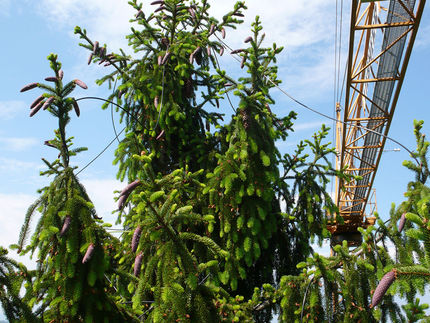Turning wood into bone: peg-leg science with a pirate hook
Pirates can now trade in their peg-legs for real legs as scientists transform wood into bone
In a Royal Society of chemistry journal Italian chemists show that ordinary wood can be turned into bone suitable for repairing damaged limbs. It brings a whole new meaning to the term "tree surgery".
The microstructure of the wood is the perfect natural template for making bone as it allows growth of blood vessels and tissues, Anna Tampieri and colleagues report in the Journal of Materials Chemistry. By treating wood with a fairly simple set of chemical processes, the natural structure of the wood is retained. The wood is first decomposed to leave a carbon framework, and then reacted with calcium, then oxygen and then carbon dioxide. A final reaction with a phosphate donor transforms the framework into hydroxyapatite, the main constituent of bone.
This structure retention could help the bone be integrated into the body more easily than current replacement materials, which do not share this organic-like structure. Tampieri suggests the material could finds other uses: she says its high strength:weight ratio could make it ideally suited for use in space vehicles.
Original publication: Anna Tampieri et al, J. Mater. Chem, 2009,.
Topics
Organizations
Other news from the department science

Get the life science industry in your inbox
By submitting this form you agree that LUMITOS AG will send you the newsletter(s) selected above by email. Your data will not be passed on to third parties. Your data will be stored and processed in accordance with our data protection regulations. LUMITOS may contact you by email for the purpose of advertising or market and opinion surveys. You can revoke your consent at any time without giving reasons to LUMITOS AG, Ernst-Augustin-Str. 2, 12489 Berlin, Germany or by e-mail at revoke@lumitos.com with effect for the future. In addition, each email contains a link to unsubscribe from the corresponding newsletter.



















































